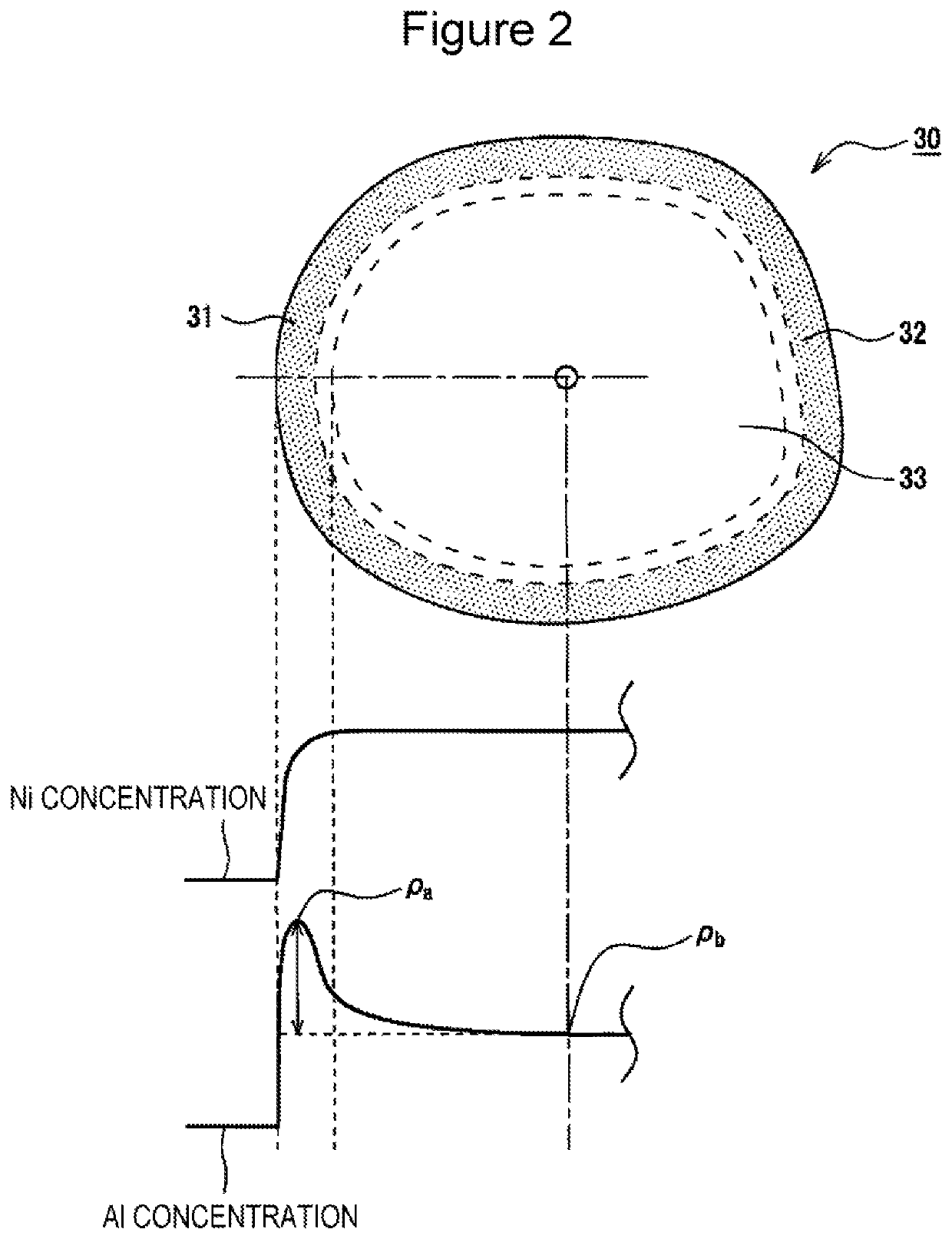Positive electrode active material for nonaqueous electrolyte secondary batteries, method for producing positive electrode active materials for nonaqueous electrolyte secondary batteries, and nonaqueous electrolyte secondary battery
a technology of nonaqueous electrolyte and active materials, which is applied in the direction of cell components, electrochemical generators, and nickel compounds, can solve the problems of increasing charge transfer resistance and lowering initial discharge capacity, and achieves the effect of low charge transfer resistance and increased battery capacity
- Summary
- Abstract
- Description
- Claims
- Application Information
AI Technical Summary
Benefits of technology
Problems solved by technology
Method used
Image
Examples
example 1
[Synthesis of Positive Electrode Active Material]
[0048]Nickel cobalt aluminum composite oxide represented by Ni0.93Co0.035Al0.035O2, lithium hydroxide (LiOH), aluminum hydroxide (Al(OH)3) and aluminum sulfate (Al2(SO4)3) were mixed together in a molar ratio of 1:1:0.018:0.002. The molar mixing ratio of aluminum hydroxide to aluminum sulfate was 9:1. Next, the mixture was calcined under a stream of oxygen at 700° C. for 20 hours. Lithium transition metal composite oxide particles (a positive electrode active material) were thus obtained.
[0049]The composite oxide particles (the positive electrode active material) were analyzed with an ICP emission spectrometer, and the composition of the particles was determined to be Li1Ni0.91Co0.035Al0.055O2. A cross section of the particle was analyzed with an energy-dispersive X-ray spectrometer (EDX). The Al concentration near the surface of the particle was determined to be 1.5 times the Al concentration in the particle core portion. Further, th...
example 2
[0056]A positive electrode active material and a test cell were obtained in the same manner as in EXAMPLE 1, except that the mixing ratio of aluminum hydroxide to aluminum sulfate in the synthesis of the positive electrode active material was changed to 7:3.
example 3
[0057]A positive electrode active material and a test cell were obtained in the same manner as in EXAMPLE 1, except that the mixing ratio of aluminum hydroxide to aluminum sulfate in the synthesis of the positive electrode active material was changed to 3:7.
PUM
| Property | Measurement | Unit |
|---|---|---|
| depth | aaaaa | aaaaa |
| temperature | aaaaa | aaaaa |
| particle size | aaaaa | aaaaa |
Abstract
Description
Claims
Application Information
 Login to View More
Login to View More - R&D
- Intellectual Property
- Life Sciences
- Materials
- Tech Scout
- Unparalleled Data Quality
- Higher Quality Content
- 60% Fewer Hallucinations
Browse by: Latest US Patents, China's latest patents, Technical Efficacy Thesaurus, Application Domain, Technology Topic, Popular Technical Reports.
© 2025 PatSnap. All rights reserved.Legal|Privacy policy|Modern Slavery Act Transparency Statement|Sitemap|About US| Contact US: help@patsnap.com


